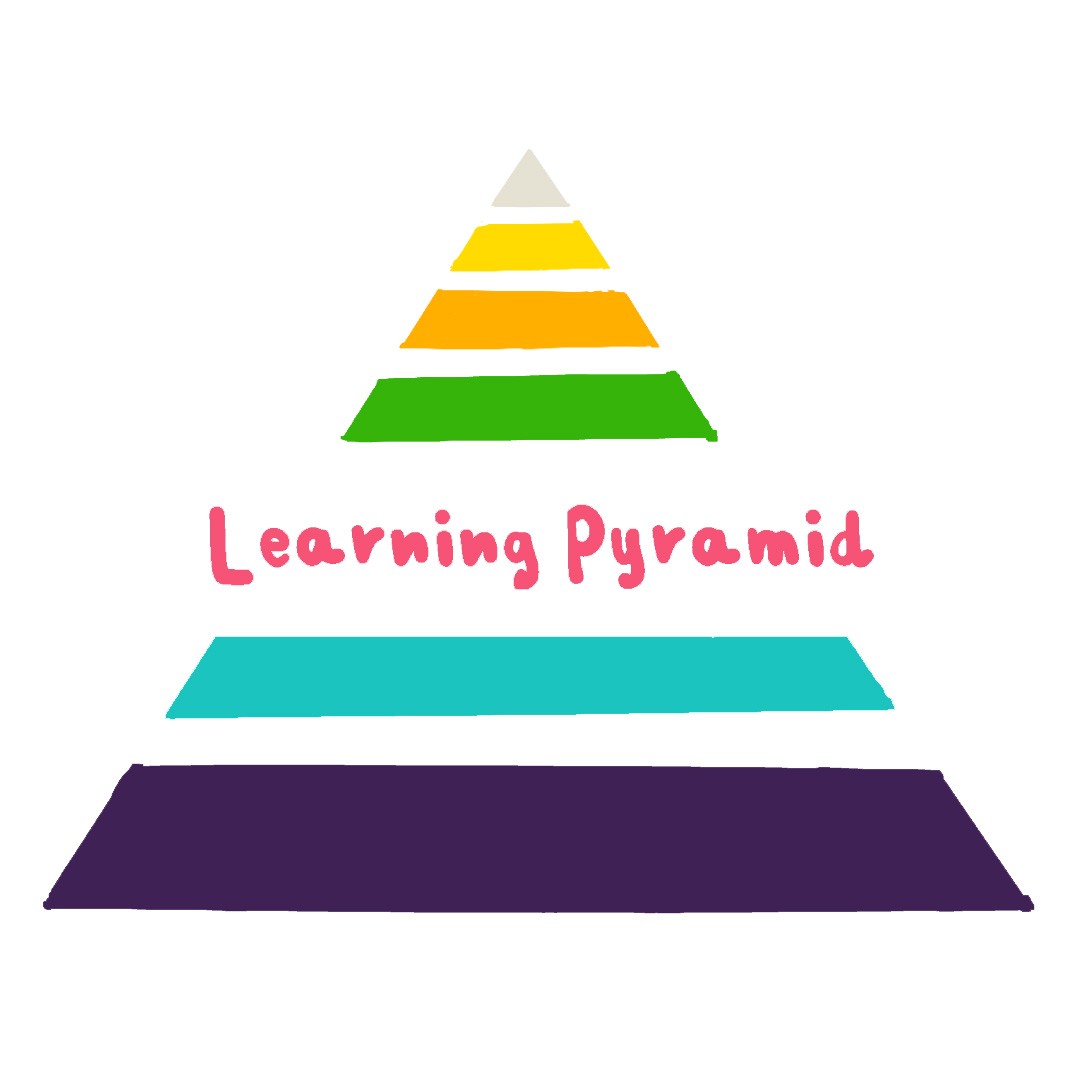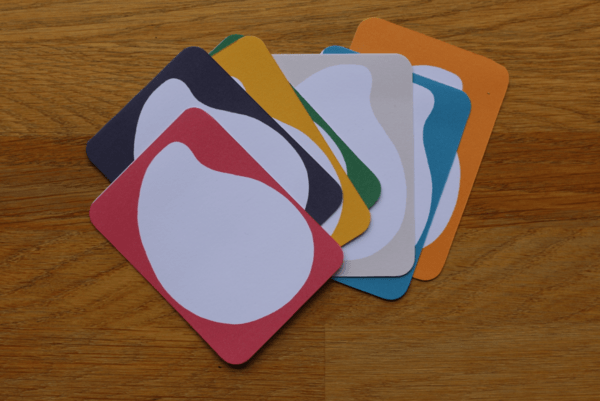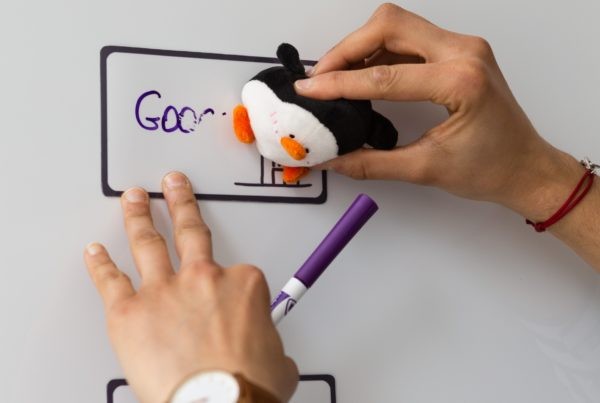What is the Learning Pyramid?
The Learning Pyramid Model, also known as “The Cone of Learning” suggests that some forms of learning are more effective than others and that varying study methods will lead to deeper learning and longer-term retention.
According to the National Training Laboratory, you remember 5% from listening to lectures, but retain 90% through teaching others!
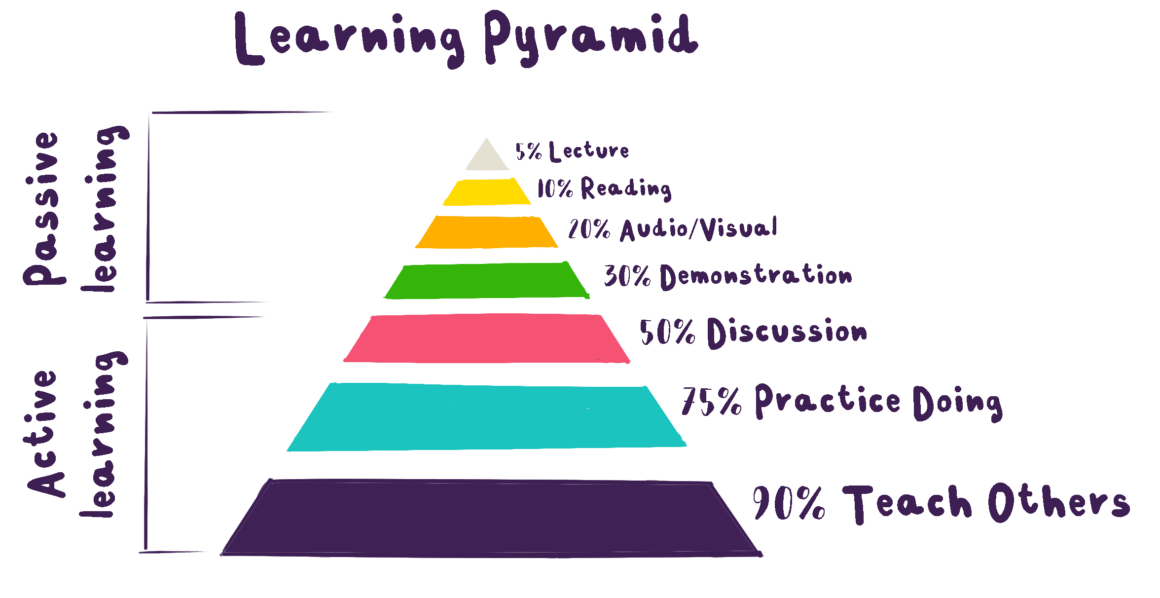
The chart above represents the average retention rate of the 7 learning activities that are split into 2 forms: active and passive learning.
What is passive learning?
This is the most common way of learning! It can be split into – listening, reading, watching and demonstrating, with an average retention rate of 30%. Passive learning can sometimes make it hard to develop real learning skills.
- Lectures: Listening to lectures makes it difficult to retain information. Try integrating other learning styles with this! Eg, Researchers found that when taking notes (by hand, not computer!) you’re more likely to enhance your learning!
- Reading: Reading is slightly more effective when retaining information! It provides you reference material to use later. Eg, highlighting important parts and taking notes. 😉
- Audio/Visual: Learning through pictures, videos, slideshows help you retain 20% of the information. But, try combining this with another learning method, example – lectures 😉 To understand more about this, check out our article – The importance of making things visual!
- Demonstration: Learning through demonstration means observing a person completing a task! This provides greater understanding – especially when information is complex.
What is active learning?
Active learning, while not the most common, is the most effective way of learning! It includes group discussions, practicing and teaching others with an average retention rate of over 70%. Using these methods you tend to develop real learning skills and allow your brain to learn, summarize and induce actively any information!
- Discussion: Discussions lead to self reflection! Eg, taking part in a discussion requires comprehension, resulting in greater retention of information.
- Practice Doing: According to research, a hands-on approach activates areas of your brain and helps retain & recall information. Leading to improved performance!
- Teach Others: The most effective way to master a subject is to be able to teach it to others. This means understanding concepts, recognizing gaps in your own knowledge and recalling information much faster! Playing together is a great way of doing this!
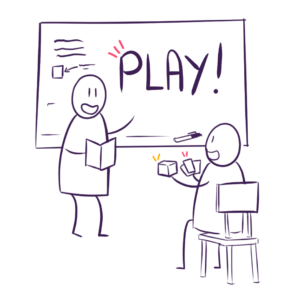
This Learning Pyramid shows that the more engaged you are in a learning process, the better you retain information! This “active engagement” is also a form of Play which enhances your experiences of learning! A good way to start being more active in your activities, hence learning, is to develop your hands-brain connection, you’ll be surprised by the results!
If you’re interested in learning how to Play, check out our online class – Basics of Play at Work! 😉

